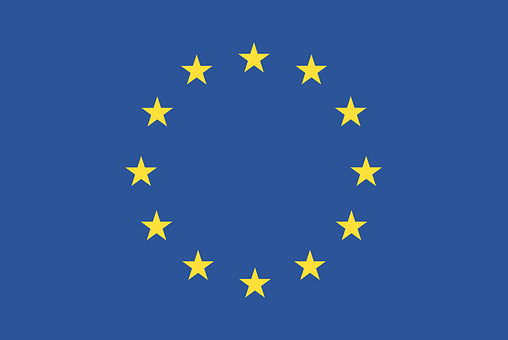Towards the end of 2016, the EU adopted a new Plant Health Regulation which is planned to come into force in December 2019. Until then the EU Commission will work on so called secondary acts. European Seed asked Christophe Rouillard, Technical Manager Plant Health and Seed Trade of the European Seed Association why this process was necessary, and how the resulting set of legislations will have an impact on European seed companies.
European Seed (ES): Christophe, why was it necessary to have this new Regulation?
Christophe Rouillard (CR): Regulation (EU) 2016/2031 on protective measures against plant pests (“Plant Health Regulation”) was adopted in October 2016, by the European Parliament and the Council. On 13 December 2016, the Regulation entered into force and will be applicable from 14 December 2019.
A Plant Health Regime has been in place since 1977 in the European union. The aim of the Community Plant Health Regime is to protect the EU against the harm caused by the entry, establishment and spread of harmful organisms injurious to plant and plant products. Up to now, the current regulatory framework for plant health within the EU was based on Council Directive 2000/29/EC. The new plant health regulation will replace the current Directive.
Since its inception in 1977, several changes amended the Plant Health Regime such as the introduction of the internal market concept in 1993, the successive enlargements to new Member States, in 2004 and 2007; and the alignments with international standards on phytosanitary measures developed by the International Plant Protection Convention (IPPC).
Nevertheless, recent examples of outbreaks of plant pests such as the current case of Xylella fastidiosa prove right the need of a review of the Community Plant Health Regime. Indeed, several issues may be taken as challenges to be addressed and reasons to justify this new Plant Health Regulation. I would mention the globalisation and rise in European and international trade; climate change and its consequences in terms of spread of harmful organisms; the availability of scientific expertise useful to develop Pest Risk Analysis (PRA) as a revised plant health regime to better be prepared to deal with future outbreaks of plant pests, and set up more effective measures for the protection of the Union’s territory and its plants.
ES: How was ESA involved in the drafting process? What measures has ESA taken to defend the interests of its members?
CR: Drafting an EU Regulation is definitively a long process. From 2008 to 2013, the evaluation of the European Union’s plant health regime took place. During this evaluation process, ESA has contributed in 2010 by giving officially its position and views on the amendments needed to the regime. Some members of ESA have also contributed by giving an aligned position to the Commission.
On 6 May 2013 the European Commission proposed a new regulation on protective measures against plant pests. The proposal includes regulating pests on the basis of established criteria for risk assessment and prioritising those pests with the most serious consequences. It also provides tools for better surveillance and early eradication of outbreaks of new pests. On 15 April 2014, the outgoing European Parliament adopted its first-reading position. Seven trilogue meetings were held which concluded on 16 December 2015, when the representatives of the Council and Parliament finalised an overall compromise text.
ES: What were the most controversial topics in this Regulation? Do you think you got a good deal for the European seed sector?
CR: ESA lobbied not to introduce drastic changes in the EU approach to phytosanitary controls at import. By drastic changes, I mean to have changes in the EU phytosanitary approach resulting in a closed system with only a positive list of products and origins allowed at import on the basis of a prior pest risk assessment. On the contrary, we supported the introduction of tools such as increased surveillance to prevent the introduction of new pests via imports. We also asked for a better recognition of the role of professional operators in the surveillance and the implementation of mitigation measures against plant pests.
We welcomed the proposal of the text as it allows to stay in a more or less open system, whereby only forbidden plant/market combinations that would have a scientifically proven damaging impact on EU food chain are not authorised for import. The system introduced also the possibility for EU Member States to implement restrictions on new high-risk trade whereby Pest Risk Analysis are not yet conducted.
ES: By the end of 2019 the Commission will work on secondary acts. Is ESA involved in the drafting process of these acts, and what are the main issues at stake?
CR: Indeed, the Plant Health Regulation is an act of primary legislation that set out broad outlines and principles, which needs to be complemented by secondary acts by the end of 2019. The Lisbon Treaty makes a distinction between two sets of Commission acts –delegated acts, and implementing acts.
This secondary legislation has to be adopted to ensure the proper implementation of this EU regulation.
Delegated acts are defined as non-legislative acts of general application to supplement or amend certain non-essential elements of a legislative act. For delegated acts, the European Parliament and Council have the power to scrutinise and control the process.
Implementing acts are to be used where uniform conditions for implementing legally binding Union acts are required. Implementing acts should legislate upon the ‘how’ implementation should take place.
As part of the Commission’s better regulation agenda, stakeholders can provide feedback on the draft text of secondary acts for 4 weeks before the relevant EU bodies vote to accept or reject those acts.
ESA does a close follow up on the Commission’s work on secondary acts and will give its position on the drafted acts. This is the case for instance on the current stakeholders’ consultation on the plant passport format.
ES: Recently the new ISPM on Seeds was adopted. Is there a link between the two sets of regulations, and was the EU Regulation used in the drafting of the ISPM?
CR: The International Plant Protection Convention (IPPC) is recognized as the international standard setting organization for plant health under the WTO SPS Agreement. There are currently 183 contracting parties.
The governing body of the IPPC adopted a new International Standard for Phytosanitary Measures (ISPM) on 6 April 2017.
The standard provides guidance to assist official National Plant Protection Organizations (NPPOs) on establishing procedures for phytosanitary import requirements; inspection, sampling and testing of seeds; and on the phytosanitary certification of seeds for export and re-export.
ISPMs are not legally binding but contracting parties are required to base their phytosanitary measures on ISPMs developed under the provisions of the IPPC.
Therefore, the EU Regulation on protective measures against plant pests respects principles set in this ISPM on seeds.
ES: Can you give some examples of Union quarantine pests and of Protected zone pests. How can seed companies prevent such pests?
CR: One of the main changes under the new regulation is that it addresses all pests – both quarantine and non-quarantine – which are categorised following risk assessment. Three main categories of pests are identified:
- Union quarantine pests: Not present in the EU or, if present, are localised and under official controls. These pose a high risk to plant health, and strict measures must be taken to prevent their entry or spread within the EU. They must be eradicated immediately if detected.
- Protected zone quarantine pests: Present in most parts of the EU, but absent from certain ‘protected zones’. These pests must not be allowed to enter and spread within these protected zones.
- Regulated non-quarantine pests: Widely present in the EU but, as they have an impact on plant quality, seeds or planting material must be guaranteed free or almost free from the pest.
To illustrate the concept of Union quarantine pests, we can take the example of Xylella fastidiosa. The presence of this pest has been notified for the first time in 2013 in the region of Apulia, the heart of Italy’s olive production area. The disease has seriously damaged the agricultural economy, as well as the traditional landscape of the region. Eradication measures have been taken to prevent the spread of this pest, which can fall under the definition of Union quarantine pest.
In regards of protected zone quarantine pests, grape phylloxera can be mentioned. This pest is present in the territory of the EU but not in Cyprus which is designated as protected zone for this pest.
The new Regulation recognises the role that professional operators, including seed companies have to play in the safe production and movement of healthy plants/plant products.
Therefore, the professional operators will have to notify any quarantine pest they find in the areas of their control.
ES: The Regulation speaks of ‘priority pests’ which would be subject to an enhanced level of obligations. Can you give an example?
CR: That’s true, the EU plant health regulation also identifies priority pests. These are Union quarantine pests with the most severe potential impact on the EU economy, environment or society. They will be subject to enhanced measures including surveys, eradication action plans, contingency plans, and simulation exercises, for which there will be enhanced EU co-financing. The list of these priority pests is not known yet as it will be adopted through a delegated act, by the end of 2019.
ES: The new Regulation mentions ‘requirements of traceability’. Is this new, and how will it affect the European seed sector?
CR: For the purpose of more efficient controls, the professional operators will have to be registered by the national plant protection organisations designated as official competent authorities. The professional operators will also have to ensure the traceability of the regulated plants/plant products they receive from and submit to other professional operators. The European seed sector is well prepared for that as traceability is a key element implemented by seed companies for many years.
ES: What are the overall impacts of the new EU Regulations for the European seed industry? Will companies need to make any changes?
CR: Professional operators, including European seed companies will be allowed to issue plant passports, under the supervision of the competent authorities. To that purpose they will have to be authorised specifically by the authorities. This has been clarified compared to the previous plant health regime.
Moreover, the EU plant health regulation introduced the concept of pest risk management plan. This pest risk management plan may be established by volunteered operators, ensuring and demonstrating a high level of competence and awareness as regards pest risks and critical points in their professional activities. The implementation of such management plans by operators of the European seed industry will thus justify a reduced frequency of official controls by national authorities. ESA will provide guidance to its members to implement such plans.
ES: Are you happy with this new EU Regulation? Is it an improvement over the previous one?
CR: We believe that this new EU plant health regulation will help to better prevent the entry and the spread of harmful organisms within the territory of the European Union. But the devil is in the details. We will therefore pay close attention to the way this new regulation will be implemented in the coming months and in particular how competent authorities will better recognize the know-how and expertise of professional operators in producing healthy seeds.













